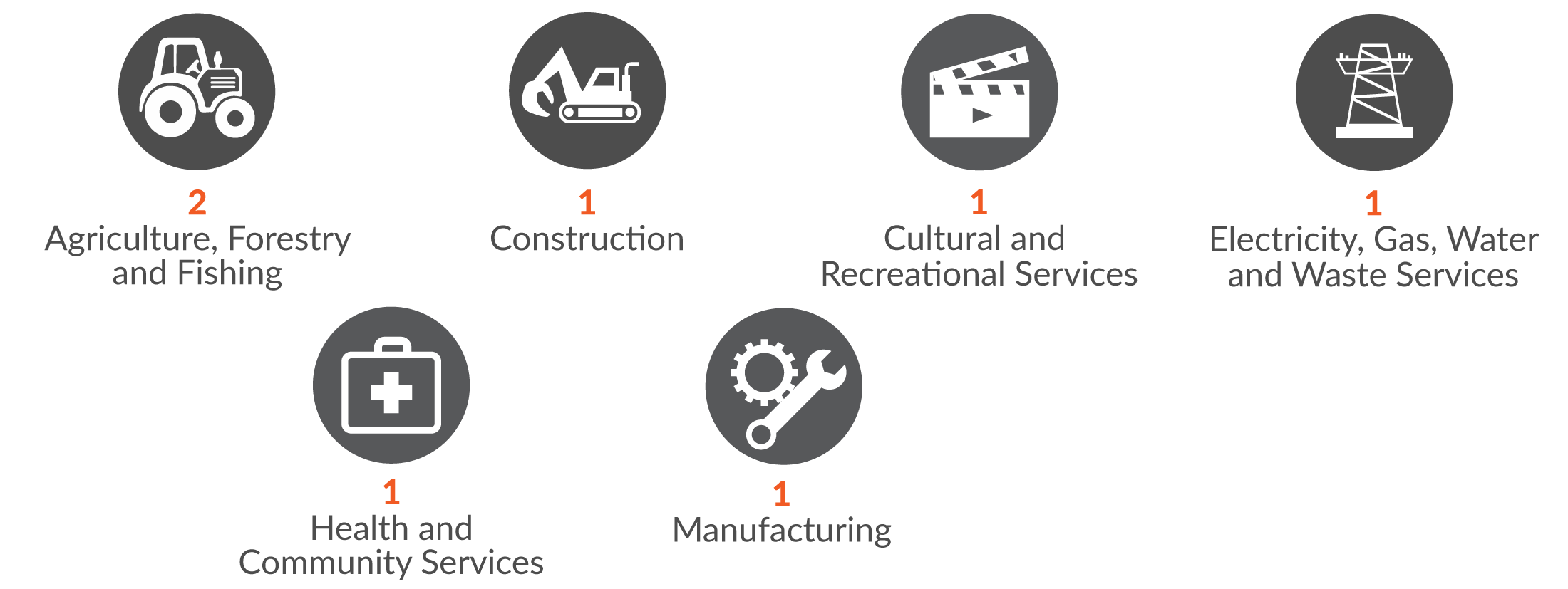2020-21 Key NT work health and safety statistics
Key injury claims information


- Claims where the worker needed at least one week of due to their injuries are considered serious injuries.
Injury claims by age and gender

Injury claims by all industries

Main industries by serious injury

Main occupations seriously injured

Main mechanisms of serious injury

Main injury groups for serious injuries

Explanatory notes
Workers’ Compensation Claims from 1 July 2020 to 30 June 2021. Preliminary data subject to revision in subsequent years as claims are finalised.
- Statistics are based on data gathered from workers compensation on claims.
- Australian and New Zealand Standard Industrial classification (ANZSIC) 1993 used to identify industry sectors.
- Type of occurrence classification system (TOOCS) 3.1 used to identify mechanisms of injury.
- Australian Standard Classification of Occupations (ASCO) 2nd edition used to identify occupations.
- Claims where the worker needed at least one week off due to their injuries are considered serious injuries.
Work-related fatalities

- In 2020-21, there were 4 worker fatalities and 3 fatalities classified as a bystander. A bystander is a person killed as a result of someone else’s work activity, while not engaged in a work activity of their own.
- The 2020-21 fatalities are currently under investigation. During the course of an investigation, a fatality may be determined as not work-related and the above figure will be adjusted accordingly during the next update.
* Please note this figure only includes work-related fatalities investigated by NT WorkSafe. Some fatalities in the Northern Territory may fall in the jurisdiction of other national agencies.
Work-related fatalities by industry

Work-related fatalities by mechanism of injury

Health and community services 20-21 →